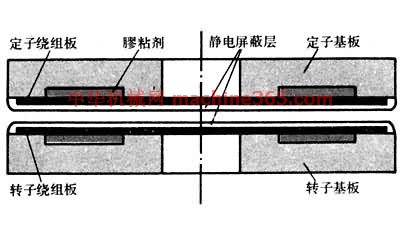1) synchronized phasor measurement


同步相量测量
1.
Voltage stability index based on synchronized phasor measurement;


基于同步相量测量的电压稳定指标(英文)
2.
Research of high precision time signal based on synchronized phasor measurement;


基于同步相量测量的高精度授时信号的研究
3.
Protection scheme for double-line with same pole based on synchronized phasor measurement;
基于同步相量测量的同杆双回路继电保护方案的研究
2) PMU


同步相量测量
1.
PMU based transient stability predication in power system;


基于同步相量测量技术的暂态稳定性实时预测
2.
The FCRBFN, whose inputs are simple function of generator rotor angles after fault measured by PMUs, is used to predict transient stability of multimachine power system.
提出一种新的基于模糊聚类的径向基神经网络及其训练算法,利用同步相量测量装置获得的故障后短时间内各发电机的功角,经简单运算后作为神经网络的输入,其输出为多机电力系统稳定性的分类结果。
3.
Phasor Measurement Unit (PMU) measures voltage and current qualities from the key junction of the grid with the synchronized high-resolution time source.
同步相量测量单元(PMU)就是在高精度的时钟同步下,测量电网各个枢纽点的状态量,将带时标的相量数据打包并通过高速通信网络传送到数据分析中心作实时监测、保护和控制之用。
3) phase measurement unit(PMU)


同步相量测量(PMU)
4) synchronized phasor measurement technique


同步相角测量法
1.
In addition to this,combining with the accomplishment in others fields,such as: control subject,Structural power subject,electronic technology etc,the paper is concerned about new thinking about analytical methods and control policy for low frequency oscillation,such as: modal analysis method,synchronized phasor measurement technique,energy storage technique.
围绕电力系统低频振荡的产生机理、分析方法、影响因素和控制策略四个方面,综述了电力系统低频振荡的研究现状,分析了现有研究成果的主要优点和存在的不足,根据实际中电力系统低频振荡出现的新特点,提出了低频振荡的机制问题,即:低频振荡的研究需要解决五个问题,并且结合控制科学、结构动力学和电力电子技术等其它学科或领域的已有研究成果,重点给出了电力系统低频振荡在分析方法和控制策略等研究方面的新思路,比如:模态分析法、同步相角测量法、储能法。
5) synchronous phasor


同步相量
1.
This paper mainly introduces the development and utilization of power line s real time dynamic monitoring technique,and makes brief analysis on the principles of the synchronous phasor measuring equipment,and probes into its further application in the power line.
主要介绍了电网实时动态监测技术的发展及应用情况,同时简要分析了同步相量测量装置的原理,并对其在电网中的进一步应用作了探讨。
6) synchrophasor


同步相量
1.
According to the comparison of the old and new IEEE synchrophasor standards, IEEE Std 1344—1995 (R2001) and IEEE Std C37.
118—2005这2个新旧标准,通过比较对PMU的一些关键问题进行了讨论,包括同步相量、时标和传输频率等,并对这些概念的实现和使用提出了解决方案。
补充资料:长度测量工具:感应同步器
将角度或直线位移信号变换为交流电压的位移传感器﹐又称平面式旋转变压器。它有圆盘式和直线式两种。在高精度数字显示系统或数控闭环系统中圆盘式感应同步器用以检测角位移信号﹐直线式用以检测线位移。感应同步器广泛应用於高精度伺服转台﹑雷达天线﹑火炮和无线电望远镜的定位跟踪﹑精密数控机床以及高精度位置检测系统中。
结构 圆盘式感应同步器由定﹑转子组成(见图 圆盘式感应同步器示意图 )。 其製作过程是先用0.1毫米厚的敷铜板刻制或用化学腐蚀方法製成绕组﹐再将它固定到10毫米厚的圆盘形金属或玻璃钢基板上﹐然后涂敷一层防静电屏蔽膜。定转子间间隙为0.2~0.3毫米。转子绕组为单相连续扇形分布﹐每根导片相当於电机的一个极﹐相邻导片间距为一个极距。定子绕组为扇形分段排布﹐极距与转子的相同。直线式感应同步器与圆盘式结构相似。不同的是它由定尺与滑尺组成﹐绕组为等距排列。
其製作过程是先用0.1毫米厚的敷铜板刻制或用化学腐蚀方法製成绕组﹐再将它固定到10毫米厚的圆盘形金属或玻璃钢基板上﹐然后涂敷一层防静电屏蔽膜。定转子间间隙为0.2~0.3毫米。转子绕组为单相连续扇形分布﹐每根导片相当於电机的一个极﹐相邻导片间距为一个极距。定子绕组为扇形分段排布﹐极距与转子的相同。直线式感应同步器与圆盘式结构相似。不同的是它由定尺与滑尺组成﹐绕组为等距排列。
工作原理 感应同步器工作原理与旋转变压器的工作原理相同。圆盘式感应同步器的转子共有 N 个导片。当转子转过角度θ 时﹐定子绕组A和B分别感应输出电势

式中 E 为定子绕组感应电势最大值﹐为激磁电源角频率。其最高精度与绕组的极对数有关。感应同步器的转子转角变化360°/N 时定子的频率变化1赫﹐因此精度大为提高﹐最高精度可达0.1〃。直线式感应同步器的滑尺移动距离为时﹐滑尺绕组中分别感应输出电势
当极距 =1毫米时﹐测量精度为±25微米。感应同步器有鑑幅型和鑑相型两种工作方式。
结构 圆盘式感应同步器由定﹑转子组成(见图 圆盘式感应同步器示意图 )。
 其製作过程是先用0.1毫米厚的敷铜板刻制或用化学腐蚀方法製成绕组﹐再将它固定到10毫米厚的圆盘形金属或玻璃钢基板上﹐然后涂敷一层防静电屏蔽膜。定转子间间隙为0.2~0.3毫米。转子绕组为单相连续扇形分布﹐每根导片相当於电机的一个极﹐相邻导片间距为一个极距。定子绕组为扇形分段排布﹐极距与转子的相同。直线式感应同步器与圆盘式结构相似。不同的是它由定尺与滑尺组成﹐绕组为等距排列。
其製作过程是先用0.1毫米厚的敷铜板刻制或用化学腐蚀方法製成绕组﹐再将它固定到10毫米厚的圆盘形金属或玻璃钢基板上﹐然后涂敷一层防静电屏蔽膜。定转子间间隙为0.2~0.3毫米。转子绕组为单相连续扇形分布﹐每根导片相当於电机的一个极﹐相邻导片间距为一个极距。定子绕组为扇形分段排布﹐极距与转子的相同。直线式感应同步器与圆盘式结构相似。不同的是它由定尺与滑尺组成﹐绕组为等距排列。 工作原理 感应同步器工作原理与旋转变压器的工作原理相同。圆盘式感应同步器的转子共有 N 个导片。当转子转过角度θ 时﹐定子绕组A和B分别感应输出电势

式中 E 为定子绕组感应电势最大值﹐为激磁电源角频率。其最高精度与绕组的极对数有关。感应同步器的转子转角变化360°/N 时定子的频率变化1赫﹐因此精度大为提高﹐最高精度可达0.1〃。直线式感应同步器的滑尺移动距离为时﹐滑尺绕组中分别感应输出电势

当极距 =1毫米时﹐测量精度为±25微米。感应同步器有鑑幅型和鑑相型两种工作方式。
说明:补充资料仅用于学习参考,请勿用于其它任何用途。
参考词条